SMAD4 and KRAS Status Shapes Cancer Cell-Stromal Cross-Talk and Therapeutic Response in Pancreatic Cancer
- PMID: 39841099
- PMCID: PMC7617379
- DOI: 10.1158/0008-5472.CAN-24-2330
SMAD4 and KRAS Status Shapes Cancer Cell-Stromal Cross-Talk and Therapeutic Response in Pancreatic Cancer
Abstract
Pancreatic ductal adenocarcinoma (PDAC) contains an extensive stroma that modulates response to therapy, contributing to the dismal prognosis associated with this cancer. Evidence suggests that PDAC stromal composition is shaped by mutations within malignant cells, but most previous work has focused on preclinical models driven by KrasG12D and mutant Trp53. Elucidation of the contribution of additional known oncogenic drivers, including KrasG12V mutation and Smad4 loss, is needed to increase the understanding of malignant cell-stromal cell cross-talk in PDAC. In this study, we used single-cell RNA sequencing to analyze the cellular landscape of Trp53-mutant mouse models driven by KrasG12D or KrasG12V, in which Smad4 was wild type or deleted. KrasG12DSmad4-deleted PDAC developed a fibro-inflammatory rich stroma with increased malignant JAK/STAT cell signaling and enhanced therapeutic response to JAK/STAT inhibition. SMAD4 loss in KrasG12V PDAC differently altered the tumor microenvironment compared with KrasG12D PDAC, and the malignant compartment lacked JAK/STAT signaling dependency. Thus, malignant cell genotype affects cancer cell and stromal cell phenotypes in PDAC, directly affecting therapeutic efficacy. Significance: SMAD4 loss differentially impacts malignant cell-stromal cell signaling and treatment sensitivity of pancreatic tumors driven by KRASG12D or KRASG12V, highlighting the importance of understanding genotype-phenotype relationships for precision therapy.
©2025 American Association for Cancer Research.
Conflict of interest statement
The authors declare no potential conflicts of interest.
Figures

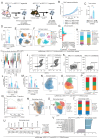
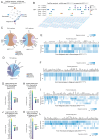
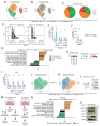

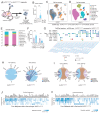

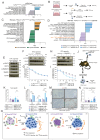
References
-
- Siegel RL, Giaquinto AN, Jemal A. Cancer statistics, 2024. CA: A Cancer Journal for Clinicians. 2024;74:12–49. - PubMed
-
- Elyada E, Bolisetty M, Laise P, Flynn WF, Courtois ET, Burkhart RA, et al. Cross-species single-cell analysis of pancreatic ductal adenocarcinoma reveals antigen-presenting cancer-associated fibroblasts. Cancer Discov. 2019 doi: 10.1158/2159-8290.CD-19-0094. - DOI - PMC - PubMed
-
- Biffi G, Oni TE, Spielman B, Hao Y, Elyada E, Park Y, et al. IL1-Induced JAK/STAT Signaling Is Antagonized by TGFbeta to Shape CAF Heterogeneity in Pancreatic Ductal Adenocarcinoma. Cancer Discov. 2019;9:282–301. doi: 10.1158/2159-8290.CD-18-0710. - DOI - PMC - PubMed
MeSH terms
Substances
Grants and funding
LinkOut - more resources
Full Text Sources
Medical
Research Materials
Miscellaneous

